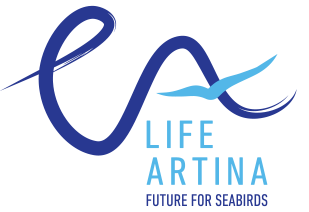
At its session on 5 June 2025, the Government of the Republic of Croatia adopted a new Regulation on the Ecological Network, thereby extending the Natura 2000 network to marine areas. For the first time, sites important for the conservation of seabirds from the order Procellariiformes – the Yelkouan shearwater (Puffinus yelkouan) and Scopoli’s shearwater (Calonectris diomedea) – have been designated. The following day, on 6 June, the Croatian Parliament ratified the High Seas Treaty, which will enable the establishment of marine protected areas in international waters.
Seabirds are considered the most threatened group of birds worldwide. According to the IUCN (International Union for Conservation of Nature), more than 30% of seabird species are globally threatened, and almost half of their populations are declining. The reasons include loss of suitable breeding habitats, predation by invasive mammals that feed on eggs and chicks, climate change, reduced food availability, and bycatch in fishing gear. One of the key mechanisms for their protection is the identification and designation of areas important for feeding and movement.
As part of the LIFE Artina project, carried out in partnership between Croatian and Maltese organisations and the Public Institution Nature Park Lastovo Archipelago, the movements of Yelkouan and Scopoli’s shearwaters were studied. Systematic field surveys and the use of GPS transmitters enabled the mapping of their marine distribution and the identification of areas critical for their conservation. Based on these findings, the Ministry confirmed two new areas within the ecological network – the Lastovo Channel and the Northern Adriatic.

Although scientific criteria highlighted the importance of several additional areas (the Korčula Channel, Hvar Channel and Eastern Mljet Channel, as well as extensions of the Lastovo Archipelago and Offshore Islands), they have not yet been included in the ecological network. The Ministry explained this decision by emphasising the need for further stakeholder consultation before such sites could be designated.
The next crucial step will be the adoption and implementation of concrete conservation measures proposed within the project, such as modifications to fishing practices and restrictions on certain human activities within these areas. Once such measures are in place, the protection of Croatia’s most endangered seabirds will be fully effective.

